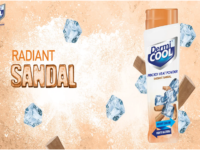How to stay away from a painful disease – Shingles?

Shingles is a viral infection characterized by a painful, blistering rash that typically appears on one side of the body or face, following the path of a nerve. The most common symptom of shingles is severe pain, often described as burning, tingling, or stabbing, which can precede the appearance of the rash in a few days. Other symptoms can include itching, fever, chills, and a general feeling of being unwell. The rash consists of red patches that develop into fluid-filled blisters and can be quite painful and distressing.
Shingles disease can be a debilitating condition, and in some cases, it can lead to long-term complications such as postherpetic neuralgia (PHN), which is persistent nerve pain following a shingles outbreak. While shingles itself is not directly contagious, the varicella-zoster virus can be transmitted to individuals who have not had chickenpox or the chickenpox vaccine, causing them to develop chickenpox, not shingles. In this blog, we will discuss how shingles is transmitted and the best ways to prevent the disease.
How Does a Person Develop Shingles?
Shingles, or herpes zoster, develops when the varicella-zoster virus, the same virus responsible for chickenpox, reactivates in the body. After recovering from chickenpox, the virus remains dormant in nerve cells near the spinal cord and brain. Factors such as age, a weakened immune system, stress, or certain medical conditions can trigger the reactivation of the virus. When reactivated, the virus travels along nerve pathways to the surface of the skin, causing a painful rash and other associated symptoms. Shingles typically affect a specific area on one side of the body or face, following the path of the nerve where the virus is reactivated.
Who is at Risk of Developing Shingles?
The following factors lead to the risk of developing shingles in individuals:
1. Age as a Risk Factor
Shingles risk rises with age, with individuals over 50 being particularly vulnerable. This increased risk is attributed to the waning effectiveness of the immune system in suppressing the reactivation of the varicella-zoster virus over time.
2. Weakened Immune Systems
Individuals with compromised immune systems, such as those with conditions like HIV/AIDS, cancer, or those who have undergone organ transplants, face a heightened susceptibility to shingles. Additionally, individuals taking immunosuppressive medications fall into this high-risk category.
3. Stress and Immunity
Stress plays a significant role in weakening the immune system, making it another contributing factor to the risk of shingles. High-stress levels can further diminish the body’s ability to keep the virus in check, potentially triggering shingles reactivation.
How to Prevent Shingles Disease?
The most effective way to prevent this infection is through vaccination. Shingles is one of the vaccination-preventable diseases, and immunizations have demonstrated high effectiveness in reducing the risk of shingles and its complications, including postherpetic neuralgia (PHN). It is recommended for adults aged 50 and older, and even if you have had shingles before, getting vaccinated can help prevent future occurrences. The immunization’s one or two-dose regimen offers robust protection and is well-tolerated, making it a reliable strategy for shingles prevention. By prioritizing vaccination, individuals can significantly reduce the likelihood of developing this painful and often debilitating disease, leading to a healthier and shingles-free future.
Conclusion
To prevent shingles, building a robust immune system is crucial, which can be accomplished by maintaining a healthy lifestyle, including a balanced diet, regular exercise, and adequate sleep. Reducing stress through practices like meditation and mindfulness is essential since high-stress levels can weaken the immune system and potentially trigger shingles reactivation. Equally important is consulting a healthcare professional for a shingles vaccination, recommended for individuals over 50.






